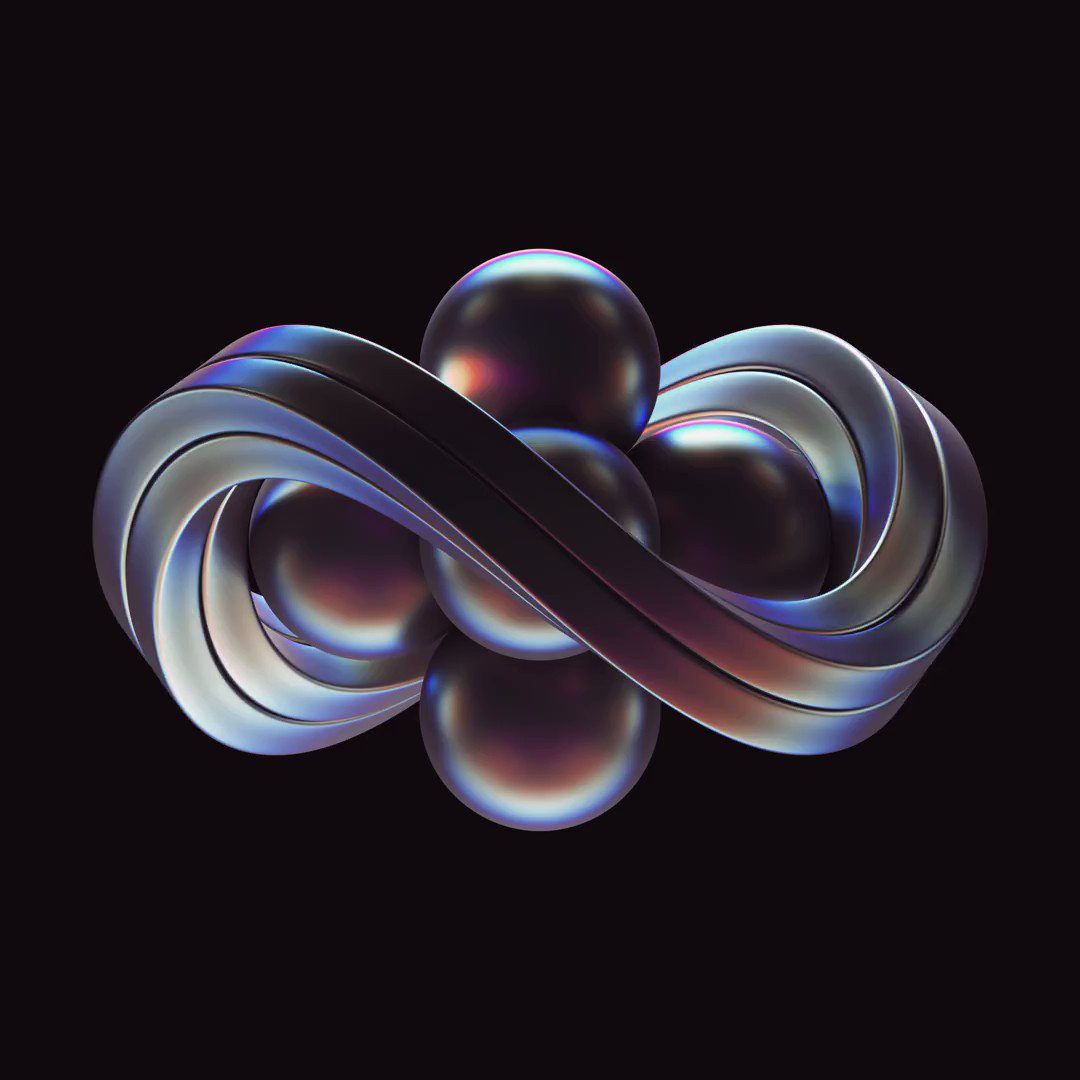In 2021 blockchain-based marketplaces are receiving hundreds of millions of dollars in investment from venture capitalists and the world’s largest brokers of fine and decorative art, jewelry, and collectibles are entering the digital landscape.
In addition to market trends, user behaviors are changing. NFTs are introducing a new and more accessible art world, where everyone can be a buyer or seller on platforms with a built in audience.
These audiences are online, digital first. They’re a part of the increasingly limited attention economy. However, enter augmented reality, boosting conversion rates by 300% above industry standards.
In this article, we’ll cover three ways that app-free augmented reality can be leveraged to drive physical and digital art sales with a strategy that stands out from the rest. With a simple QR code or URL, bring your marketing strategy into a new dimension with WebAR.
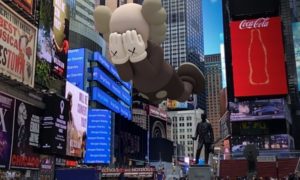
Kaws AR
1. Product Placement: Empower the Purchasing Process
Presenting artwork in the right way is an artform itself that goes back long before the word ‘digital’ even existed. In retail, the idea of presenting window displays was at one time revolutionary when in 1909 Harry Gordon Selfridge first experimented with window dressing in the United Kingdom, commissioning artists to create eye-catching displays.
Today, mobile phones have taken window shopping to a new era. The little rectangles we all carry in our pockets are a window into almost every storefront, gallery, exhibition, and digital space in the world.
Consumers browse for hours each day on their mobile devices, scrolling through infinity walls of content competing for time in a singular and pocket-sized storefront.
Where lighting technology brought window shopping to new heights in the 1980s, today, WebAR is the logical next step in this constantly evolving concept.
At the moment of inspiration, WebAR means that audiences can click to launch an interactive and multisensory experience with artwork in their own space, drawing their full attention.
Interacting with assets in this way boosts customer confidence. The more time they spend interacting with content, the more likely they are to checkout.
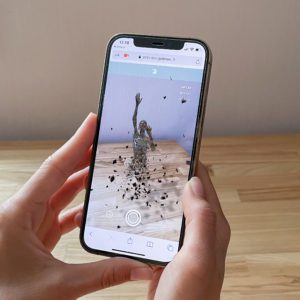
Geenee WebAR with 3D and music artist LEVITATE
2. Build Fandom and Drive Scarcity with WebAR
Three dimensional artwork is still a novelty. It stands out from traditional art sales as a powerful tool to convert viewers into followers, who become fans invested in an artist’s work.
When it comes to augmented reality NFTs, Geenee’s new feature (out soon!) will enable creators to make and mint WebAR artwork directly from our drag & drop code-free WebAR builder as a first-of-its-kind WebAR NFT platform for creators.
As your audience is growing, create limited editions in proportion to your purchasing audience. Scarcity drives demand, and therefore boost returns on NFT platforms where purchasing artwork is typically done through action.
Enabling everyone to interact with, view and share your artwork in WebAR boots fandom while making it easy to balance accessibility with scarcity in the sales process.
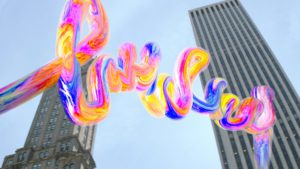
Image Source: Apple
3. WebAR: Physical and Digital Asset Management
In relation to product placement, WebAR brings physical and digital artwork into an audience’s environment with numerous benefits that reinforce the purchasing decision.
Audiences can place physical art pieces in their home or workspace, try various colors, sizes, and combinations of artworks. They can see how artwork fits in their space in life-size, and with existing collections.
When it comes to digital art, consumers can also interact with elements like animations, and visual and audio effects in a multisensory experience.
Adding WebAR to artwork, whether physical or digital, gives audiences unparalleled access to engage with it in new ways that drive visibility, engagement, and sales.
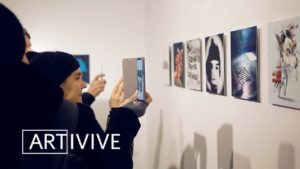
Image Source: Artivive
For any scale project, bring artwork into a new dimension with WebAR. From preview to purchase, WebAR drives discovery, engagement, and sales at every stage of engagement.
Add social media icons to your project, checkout, and information that transforms viewers into followers and then highly engaged consumers.
Additionally, WebAR encourages audiences to take photos, selfies, and videos with artwork. User generated content is shared with friends, families and on social media.
Whether WebAR is a part of making, purchasing or sharing physical or digital artwork, all instances boost visibility and increase an artwork’s potential to find the right audience and potential buyers.
Bonus fun fact!
Gartner estimated that over 100 million consumers used AR to shop in 2020. In a traditional retail space, if 100 million people walked through the store, most would have a similar shopping experience. With AR, retailers can customize how each user experiences a product. With targeted offering in the retail space, AR shoppers are able to have a more impactful, personalized shopping experience.
Cover image credit: Metarift NFT ( sold for $904,413)
